
This slideshow reviews what Cyberbullying is and a few things that victims and people around them can do to deal with it.
- Subject:
- Impacts of Computing
- Material Type:
- Activity/Lab
- Author:
- Jude Raffeinner
- Date Added:
- 04/18/2022

This slideshow reviews what Cyberbullying is and a few things that victims and people around them can do to deal with it.
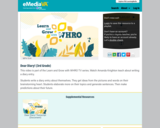
This video is part of the Learn and Grow with WHRO TV series. Watch Amanda Knighton teach about writing a diary entry.

While a freshman at VCU, Adam Oakes made the decision to join the Delta Chi fraternity. That decision cost 19-year-old Adam his life. On February 26, 2021, Adam attended the Delta Chi Big/Little brother reveal night. Early the next morning, Adam was found unresponsive in the house where the event was held. When first responders arrived, Adam was pronounced dead at the scene. The medical examiner’s report stated that Adam’s cause of death was alcohol overdose. It was later determined that this was as a result of a hazing incident.
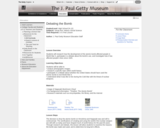
Students will research how the development of the atomic bomb affected people in World War II, participate in a debate about the bomb's use, and investigate how it has affected people's lives since 1945.

In this lesson, students will learn how to balance chemical equations. They will also learn how to debug computer programs. By the end of the lesson, students will be able to see the similarities between these two processes and how they can be used to solve problems.

In this lesson, students are going to debug algorithms that list steps of how habitats change over time due to natural and human resources. Students will need to think critically about the order of steps that occur when habitats change over time.
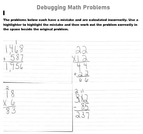
Students locate and correct mistakes (bugs) in standard math algorithms.

Students will review major United States holidays and why they are celebrated as a precursor to completing activities to help students organize the dates of holidays sequentially. They will collect information in a graphic organizer, mark dates on a yearly calendar, debug sequencing errors in a timeline, and will make personal connections by describing how they celebrate one specific United States holiday with their families and/or friends.

During this lesson, students will make connections between Computer Science and making predictions in fiction and literary nonfiction. Students will make, confirm, and revise predictions and then see how this is rEnglishted to sequencing, looping, and debugging in Computer Science. Students will practice using text evidence and prior knowledge to make predictions. When their predictions are not correct, students will revise them by looking at the existing text evidence, adding or changing text evidence, re-evaluate their prior knowledge, and then make a new prediction. Students will learn that when they revise their predictions, it’s like Computer Scientists who have to debug algorithms when the result does not meet the expected outcome.
![Debugging Sequences with Rounding [Part 3]](https://goopenva.org/static/newdesign/images/materials/default-thumbnail-index.png)
Students will work on taking the suggestions from partners from the last lesson and troubleshoot how they could improve their sequence for rounding. There are three lessons that go together to allow students to create a sequence, have a peer follow the sequence, then troubleshoot the sequence if steps fail.

Students will apply problem solving strategies to identify bugs in number sentences up to 9,999 and debug those number sentences. Students will review a scenario, identify the error (bug) and correctly solve and explain their debugging strategy.

TSW will be able to see the corrEnglishtion between CS standards of debugging and the English standard of recursive writing and editing. This lesson will take place after the teacher has gone over the writing rubric for Grade 8 SOL and has covered such topics as Content Written Expression and Usage and Mechanics in writing. Students should have a basic understanding of the five paragraph essay, outlining, desired construct of written essay, and have been provided with examples. Ideally this lesson will take place in the second or third quarter of the school year.

Students will debug a text by working in pairs or small groups to review a grade level text to determine where quotation marks are needed to indicate dialogue. Students will connect edits to the story to finding errors in computer programs. Provide examples.
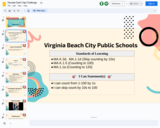
Standards of Learning
MA.K.3d, MA.1.1d (Skip counting by 10s)
MA.K.1.5 (Counting to 100)
MA.1.1a (Counting to 120)
🎯 I Can Statement(s) 🎯
I can count from 1-100 by 1s
I can skip count by 10s to 100
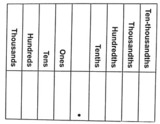
This PowerPoint reviews fractions as parts of a whole, powers of ten, and introduces decimal place value. Students will use money to find equivalent fractions and decimals.
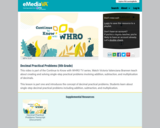
This video is part of the Continue to Know with WHRO TV series. Watch Victoria Valenciana Brannen teach about creating and solving single-step practical problems involving addition, subtraction, and multiplication of decimals.

5.1 Decimal Round Up/Round Down Co-Teaching MIP
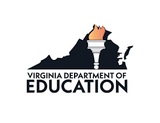
Rounding decimals, through the thousandths, to the nearest whole number, tenth, or hundredth. Mathematics Instructional Plans (MIPs) help teachers align instruction with the 2016 Mathematics Standards of Learning (SOL) by providing examples of how the knowledge, skills and processes found in the SOL and curriculum framework can be presented to students in the classroom.

Mic Drop Maths is a mathematics podcast for 5th graders based on the VA Standards of Learning. Each episode addresses one standard and is broken into segments including concept, real-world application, math history, literature connections, misconceptions, and more! There is music, sound effects, jokes, and student voice in each engaging and entertaining episode.